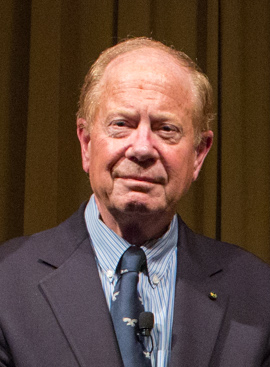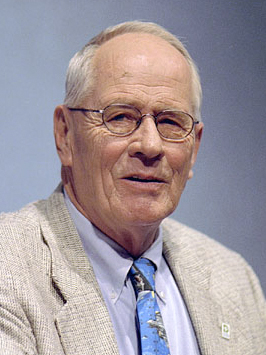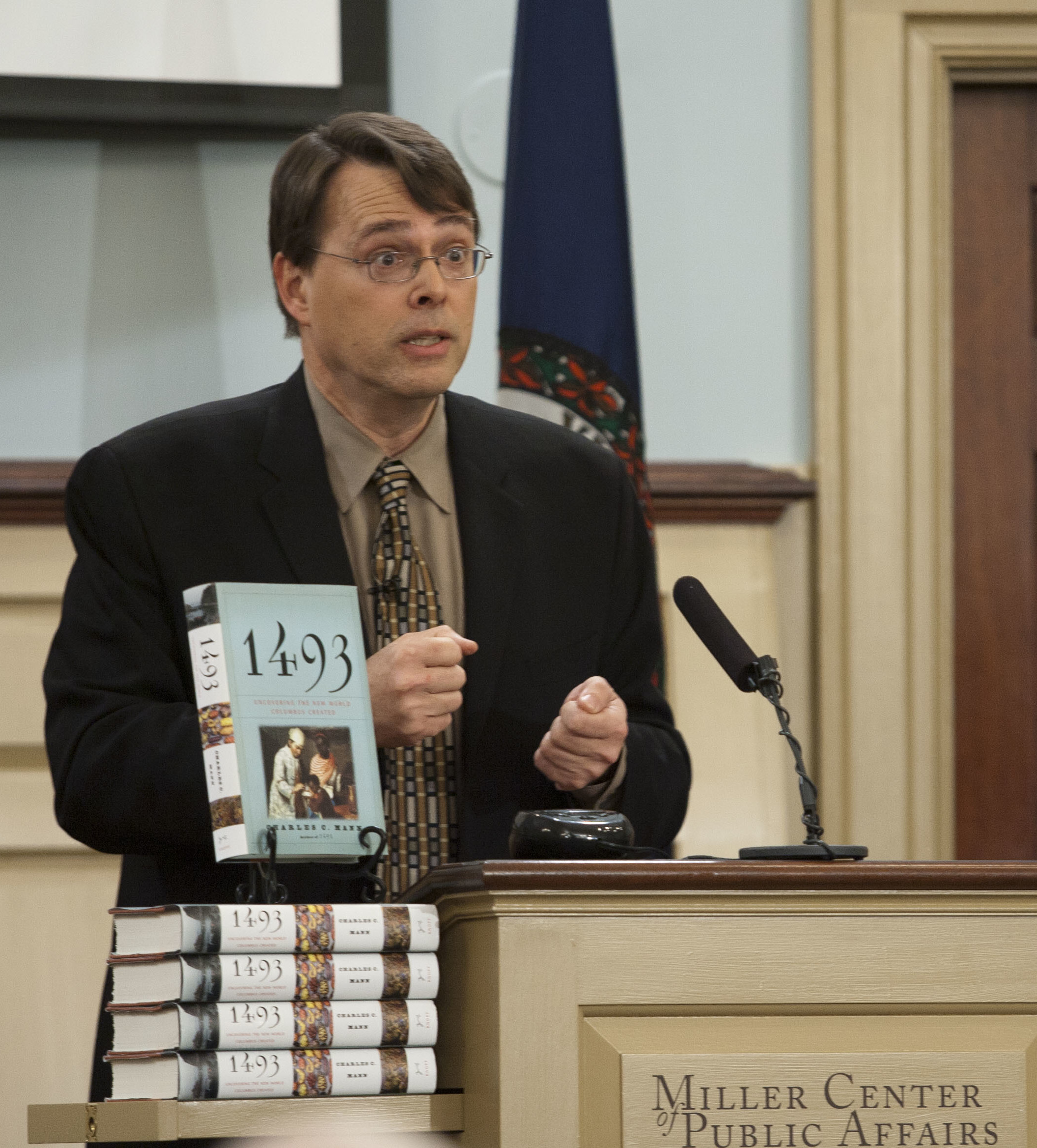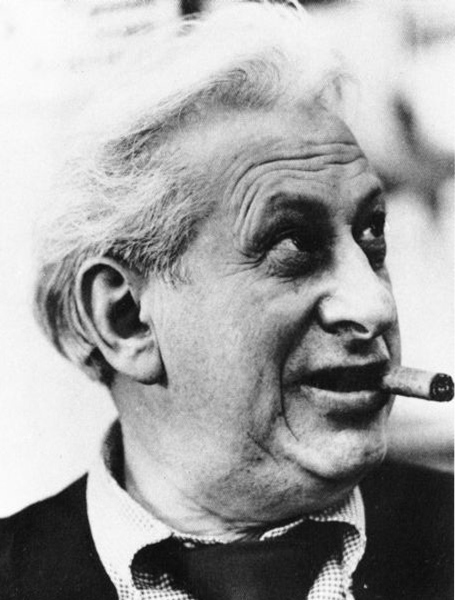Discover the best books for American history. Witness the turbulent course of one of the world’s largest countries through the eyes of its greatest historians.
Finding the best books for American history can quickly become complicated. The United States, in particular, has a tumultuous history filled with constant change, turmoil, and clashes of ideas. It can be difficult to express that all in one book, so we have gathered the best texts on American history that document the nation’s military, cultural, and political development.
You’re sure to find a title that sounds too fascinating to ignore! To find more books of a similar genre, check out the best books on Native American history.
Contents
- Best Books on US History
- 1. 1776 by David McCullough
- 2. Empire of the Summer Moon by S.C. Gwynne
- 3. The Best and the Brightest by David Halberstam
- 4. Mayflower: A Story of Courage, Community, and War by Nathaniel Philbrick
- 5. The Forgotten 500 by Gregory A. Freeman
- 6. An Army at Dawn: The War in North Africa, 1942-1943 by Rick Atkinson
- 7. A People’s History of the United States by Howard Zinn
- 8. Founding Brothers: The Revolutionary Generation by Joseph J. Ellis
- 9. American Nations: A History of the Eleven Rival Regional Cultures of North America by Colin Woodard
- 10. Parting the Waters by Taylor Branch
- 11. Wilderness at Dawn by Ted Morgan
- 12. Bury My Heart at Wounded Knee: An Indian History of the American West by Dee Brown
- 13. Undaunted Courage: Meriwether Lewis, Thomas Jefferson, and the Opening of the American West by Stephen Ambrose
- 14. 1491: New Revelations of the Americas Before Columbus by Charles C. Mann
- 15. The Devil in the White City: Murder, Magic, and Madness at the Fair That Changed America by Erik Larson
- 16. You Never Forget Your First: A Biography of George Washington by Alexis Coe
- 17. Hard Times: An Oral History of the Great Depression by Studs Terkel
- 18. The Story of American Freedom by Eric Foner
- 19. Team of Rivals: The Political Genius of Abraham Lincoln by Doris Kearns Goodwin
- 20. The Bully Pulpit: Theodore Roosevelt, William Howard Taft, and the Golden Age of Journalism by Doris Kearns Goodwin
- 21. The “S” Word: A Short History of an American Tradition…Socialism by John Nichols
- 22. These Truths: A History of the United States by Jill Lepore
- 23. The Warmth of Other Suns: The Epic Story of America’s Great Migration by Isabel Wilkerson
- 24. One Mighty and Irresistible Tide: The Epic Struggle Over American Immigration, 1924-1965 by Jia Lynn Yang
- 25. The Man Who Knew the Way to the Moon by Todd Zwillich
- 26. Legacy of Ashes: The History of the CIA by Tim Weiner
- 27. How America Eats: A Social History of U.S. Food and Culture by Jennifer Jensen Wallach
- 28. American Art: History and Culture, Revised 1st Edition by Wayne Craven
Best Books on US History
1. 1776 by David McCullough

Widely regarded as one of the best books on the American Revolutionary War, 1776 focuses on the soldiers from all walks of life who joined to fight. There is, of course, a focus on George Washington, but the book takes time to talk about common soldiers, British commanders, and a few standouts, such as Nathanial Green and Henry Knox, who became war heroes in their own ways.
“And if his youth was obvious, the Glorious Cause was to a large degree a young man’s cause. The commander in chief of the army, George Washington, was himself only forty-three. John Hancock, the President of the Continental Congress, was thirty-nine, John Adams, forty, Thomas Jefferson, thirty-two, younger even than the young Rhode Island general.”
David McCullough, 1776
2. Empire of the Summer Moon by S.C. Gwynne

The fascinating Empire of the Summer Moon focuses on the rise and fall of the mighty Comanche nation, specifically on the battles with Europeans and eventually the United States. It chronicles the hot and cold intermittent wars that led to western expansion, the loss of buffalo herds, and how the Comanche stalled American progress for a key 40-year period. In between the sweeping histories, the text focuses on key figures, including Chief Quanah, the “White Squaw” Cynthia Ann Parker, and others.
“In a fight with Comanches, dismounting on open ground was like signing your own death warrant. Men on foot against mounted men moving 20-30 miles per hour who could shoot twelve arrows in the time it took to reload a rifle and fire it once was not a fair fight.”
S.C. Gwynne, Empire of the Summer Moon
3. The Best and the Brightest by David Halberstam

Why did America get involved in Vietnam? Why did the war go so badly? Why was the backlash so severe? The Best and the Brightest dives into the gritty details behind the Vietnam War like no other text has before, clearly laying out the causes and effects of this tragedy in an award-winning way.
“What it came down to was a search not for the most talent, the greatest brilliance, but for the fewest black marks, the fewest objections. The man who had made the fewest enemies in an era when forceful men espousing good causes had made many enemies…”
David Halberstam, The Best and the Brightest
4. Mayflower: A Story of Courage, Community, and War by Nathaniel Philbrick
Before America even had a formal military, the Pilgrims made their famous journey on the Mayflower…and the result was more than 50 years of unexpected clashes, temporary peace talks, and cultural battles. Mayflower: A Story of Courage, Community, and War dives into how the Pilgrims dealt with the alien way of life they encountered when first setting foot on the shores of America. It’s a sobering, fascinating read for those who want the real story.
“The moment any of them gave up on the difficult work of living with their neighbors—and all of the compromise, frustration, and delay that inevitably entailed—they risked losing everything.”
Nathaniel Philbrick, Mayflower: A Story of Courage, Community, and War
5. The Forgotten 500 by Gregory A. Freeman
An award-winning examination of one special World War 2 mission – The Forgotten 500, follows an OSS team sent to recover 500 airmen trapped behind enemy lines, hiding among villages in Yugoslavia. There’s a reason this story has gotten much attention from popular sources: The mission was sealed for more than 50 years. But now that it’s unclassified, the story is incredible for anybody interested in military history.
“So he pointed to the unit patch on his uniform shirt and said, “U.S. . . . Air Force . . . American.” The sturdy, gray-haired woman nodded and seemed relieved, understanding Musgrove. The women nodded their heads and pointed to themselves, saying, “Yugoslavian.”
Gregory A. Freeman, The Forgotten 500
6. An Army at Dawn: The War in North Africa, 1942-1943 by Rick Atkinson

Winner of a Pulitzer Prize, An Army at Dawn dives deep into the WW2 front in North Africa and how it was a gateway for the United States to not only enter the war but make a commanding difference. That difference would go on to ally Europe and the United States in ways that would have never been possible before.
“Mail finally arrived for some troops—many had received nothing for two months or more—and Christmas packages often implied a certain homefront incomprehension of life in the combat zone: bathrobes, slippers, and phonograph records were particularly popular.”
Rick Atkinson, An Army at Dawn: The War in North Africa, 1942-1943
7. A People’s History of the United States by Howard Zinn

In this famous text, “People” refers to the people that aren’t as often discussed in broad history. A People’s History of the United States focuses on the oppressed, the people who were deliberately silenced and kept out of power at different stages in American history. In looking at them and their stories, readers also learn about dominant power structures in America and the cultural wars that often went unnoticed at the time but profoundly impacted American society.
“Nations are not communities and never have been. The history of any country, presented as the history of a family, conceals the fierce conflicts of interest (sometimes exploding, often repressed) between conquerors and conquered, masters and slaves, capitalists and workers, dominators and dominated in race and sex.”
Howard Zinn, A People’s History of the United States
8. Founding Brothers: The Revolutionary Generation by Joseph J. Ellis

While the likes of Hamilton have done a lot to reframe our thinking of the American founding fathers, Founding Brothers go far beyond with an intimate look at America’s revolutionary leaders, including Washington, Jefferson, Hamilton, John Adams, Aaron Burr, James Madison, Benjamin Franklin, and more. It examines their personal lives, conflicts, what made each unique, and how they met in something more significant than the sum of their parts.
“But if insecurity was the primal source of Hamilton’s incredibly energy, one would have to conclude that providence had conspired to produce at the most opportune moment perhaps the most creative liability in American history.”
Joseph J. Ellis, Founding Brothers: The Revolutionary Generation
9. American Nations: A History of the Eleven Rival Regional Cultures of North America by Colin Woodard
The bold American Nations chooses to divide America into 11 separate – and often rival – cultural regions. It then examines each region, its cultural history, and progression, and how that deeply affects what Americans think of their own “America.” While it’s just a theory, the evidence gathered is interesting and informative.
“The Midlanders—a great many of them German speaking—carried their pluralistic culture into the Heartland, a place long since identified with neighborliness, family-centered progress, practical politics, and a distrust of big government.”
Colin Woodard, American Nations: A History of the Eleven Rival Regional Cultures of North America
10. Parting the Waters by Taylor Branch

Parting the Waters serves as a thorough introduction to the Civil Rights movement in the United States and the key figures and events that helped it get started. It’s an in-depth look at the period, especially at Martin Luther King Jr.’s actions, and there are two other books in the series for those who would like to learn more about what happened after King.
“He scolded his listeners for being eager to sell off their few productive assets in exchange for articles of prestige. “You say you want a definition of perpetual motion?” he asked. “Give the average Negro a Cadillac and tell him to park it on some land he owns.”
Taylor Branch, Parting the Waters
11. Wilderness at Dawn by Ted Morgan
Wilderness at Dawn is a comprehensive look at America’s early colonization. It has been an excellent read for decades, helping students and curious readers learn more about the early ages of America. The book is broadly divided into several sections, starting with the Ice Age and migration of the first Native Americans, then skipping ahead to European exploration.
Then, it focuses on the English colonization, the French and Indian War, and, ultimately, the fall of the Native American tribes. Morgan takes time to focus on specific people and places, with narratives, told from the records left behind. The result is a great start to any American history experience.
“Could he and Joliet have any idea of the vastness of the area they had acquired for France? Could they have even begun to imagine the watershed, with thirty-five thousand miles of navigable waters converging into one…?”
Ted Morgan, Wilderness at Dawn
12. Bury My Heart at Wounded Knee: An Indian History of the American West by Dee Brown
The famous Bury My Heart at Wounded Knee is still a top recommendation for American history and is studied in many different classes. It covers the slow but steady erasure of Native Americans from various tribes, including the Dakota, Ute, Sioux, and Cheyenne, allowing them to tell their own stories.
That includes ugly episodes like massacres, broken treaties, and much more – but it’s also one of the most authentic looks at how native Americans became relegated to a few small reservations as the United States pushed west.
“Another Chief remembered that since the Great Father promised them that they would never be moved they had been moved five times. ‘I think you had better put the Indians on wheels,” he said sardonically, “and you can run them about whenever you wish.’”
Dee Brown, Bury My Heart at Wounded Knee: An Indian History of the American West
13. Undaunted Courage: Meriwether Lewis, Thomas Jefferson, and the Opening of the American West by Stephen Ambrose

Lewis and Clark’s journey is another popular story of American history, but what actually happened? Undaunted Courage explores the full journey of Western exploration, packed with amazing discoveries and the details of what Jefferson and Lewis (later joined by Clark) aspired to achieve.
“That evening, the first Americans ever to enter Montana, the first ever to see the Yellowstone, the Milk, the Marias, and the Great Falls, the first Americans ever to kill a grizzly, celebrated their nation’s twenty-ninth birthday.”
Stephen Ambrose, Undaunted Courage
14. 1491: New Revelations of the Americas Before Columbus by Charles C. Mann

1491 is an insightful combination of science, archaeology, and history that seeks to redefine the America that existed before its discovery by Europeans. The result is a riveting account of ancient native American cities and empires with their own complex cultures, wars, and scientific fields. It’s no wonder the book has become so widely discussed since its publication in the 2000s.
“On Columbus’s later voyages, his crew happily accepted godhood—until the Taino began empirically testing their divinity by forcing their heads underwater for long periods to see if the Spanish were, as gods should be, immortal.”
Charles C. Mann, 1491: New Revelations of the Americas Before Columbus
15. The Devil in the White City: Murder, Magic, and Madness at the Fair That Changed America by Erik Larson

Even those who don’t read history books will fall in love with this incredible retelling of the 1893 Chicago World Fair. This milestone event changed how the world saw technology and American culture. While some parts may seem like a novel (including a serial killer doctor), The Devil in the White City is derived from historical facts about the Fair.
“Beneath the gore and smoke and loam, this book is about the evanescence of life, and why some men choose to fill their brief allotment of time engaging the impossible, others in the manufacture of sorrow.”
Erik Larson, The Devi in the White City
16. You Never Forget Your First: A Biography of George Washington by Alexis Coe
Many books and myths have been made about George Washington, but Coe’s You Never Forget Your First has won acclaim as an honest, straightforward look at the man and all his quirks. Sure, he was a good commander and president, but he also called his dog Sweetlips, owned hundreds of enslaved peopleand once had dysentery so badly he had to ride with a cushion on his saddle.
“Political partisanship, Washington predicted, would reduce the government to a crowd of bickering representatives who were very good at thwarting each other but got very little accomplished for their constituents.”
Alexis Coe, You Never Forget Your First: A Biography of George Washington
17. Hard Times: An Oral History of the Great Depression by Studs Terkel

Hard Times is an incredible oral history that tracks down the words of business owners, artists, writers, politicians, and others with firsthand experience in the Great Depression and how it changed their lives. While often somber, other tales show the humor and entertainment that kept people going in those particularly hard times. It’s a potential addition to our list of classic books to read.
“I’ll never forget that Depression Easter Sunday. Our son was four years old. I bought ten or fifteen cents’ worth of eggs. You didn’t get too many eggs for that.”
Studs Terkel, Hard Times: An Oral History of the Great Depression
18. The Story of American Freedom by Eric Foner

Political history can be a notoriously touchy subject, which is why The Story of American Freedom‘s in-depth look at freedom in America is so welcome. Foner’s narrative focuses on the facts and details of freedom since the American Revolution, how it has been redefined over time and each political battle that added – or took away – freedoms in America.
That includes the story of politicians and enslaved people, rebellions, riots, rising movements, and backroom meetings. It doesn’t touch much on the modern world or political framework (the book was published in the 1970s) but is an excellent read for what it does encompass.
“Who owns history? Everyone and no one–which is why the study of the past is a constantly evolving, never-ending journey of discovery.”
Eric Foner, The Story of American Freedom
19. Team of Rivals: The Political Genius of Abraham Lincoln by Doris Kearns Goodwin

Lincoln has always been a popular focus in American history, and few books do as good a job studying Lincoln’s tenure as president as Team of Rivals. It dives into the politics of Lincoln’s reality, filled with troublemakers, divisions, and problems that ultimately lead to the Civil War. The book discusses how Lincoln navigates these challenges and many others during the war – in great depth. A history book this big isn’t for the faint of heart!
“Washington was a typical American. Naopoleon was a typical Frenchmen, but Lincoln was a humanitarian as broad as the world. He was bigger than his country— bigger than all the Presidents together. We are still too near to his greatness,’ Tolstoy concluded.”
Doris Kearns Goodwin, Team of Rivals: The Political Genius of Abraham Lincoln
20. The Bully Pulpit: Theodore Roosevelt, William Howard Taft, and the Golden Age of Journalism by Doris Kearns Goodwin
The Bully Pulpit covers the Gilded Age, the Progressive Era, and the rise of journalism as a political force. This novel takes a close look at Theodore Roosevelt and William Taft, following their rivalry and how it was influenced by the key changes in their generation, much of which may seem startlingly familiar to us today.
“The flames of a new economic evolution run around us, and we turn to find that competition has killed competition, that corporations are grown greater than the State . . . and that the naked issue of our time is with property becoming master, instead of servant.”
Doris Kearns Goodwin, The Bully Pulpit
21. The “S” Word: A Short History of an American Tradition…Socialism by John Nichols
Modern politics in America is filled with discussions of socialism and what it means. The S Word goes back throughout American history to examine what role socialism has played during key moments of the notion. It examines the roles of outspoken socialists like Helen Keller, the development of labor laws, and more. The book reads as a series of informative socialist articles that are easily digestible if somewhat focused on Nichol’s state of Wisconsin.
“We are not wrong in what we are doing. If we are wrong, the Supreme Court of this nation is wrong. If we are wrong, the Constitution of the United States is wrong. If we are wrong, God Almighty is wrong.”
John Nichols, The “S” Word
22. These Truths: A History of the United States by Jill Lepore

The “Truths” are three ideas cited by Jefferson: Political equality, natural rights, and the people’s sovereignty. The daunting but beautifully written and comprehensive These Truths goes carefully through American history and repeatedly asks how well America has lived up to these truths with each major stage of its history.
“History isn’t only a subject; it’s also a method. My method is, generally, to let the dead speak for themselves. I’ve pressed their words between these pages, like flowers, for their beauty, or like insects, for their hideousness.”
Jill Lepore, These Truths: A History of the United States
23. The Warmth of Other Suns: The Epic Story of America’s Great Migration by Isabel Wilkerson

From around 1915 to 1970, an unspoken migration happened in the United States: Black people moved west, fleeing the South and setting up new lives in other spots around the nation. This massive migration influenced everything from the horrifying Tulsa Massacre to the success of Barack Obama. Collectively, the expertly-told The Warmth of Other Suns links key moments of history, culture, and art.
“I was leaving the South to fling myself into the unknown… I was taking a part of the South to transplant in alien soil, to see if it could grow differently, if it could drink of new and cool rains, bend in strange winds, respond to the warmth of other suns and, perhaps, to bloom.”
Isabel Wilkerson, The Warmth of Other Suns: The Epic Story of America’s Great Migration
24. One Mighty and Irresistible Tide: The Epic Struggle Over American Immigration, 1924-1965 by Jia Lynn Yang
In 1924, America passed a law that revolutionized its stance on immigration, blocking undesirable immigrants from Eastern Europe, Asia, and other locations. That law lasted until 1965 and played a key role in American racism until it was repealed. One Mighty and Irresistible Tide is the story of immigration at that time. You might also be interested in these authors like Bernard Cornwell.
“Our beautiful America was built by a nation of strangers. From a hundred different places or more they have poured forth into an empty land, joining and blending in one mighty and irresistible tide.”
Jia Lynn Yang, One Mighty and Irresistible Tide
25. The Man Who Knew the Way to the Moon by Todd Zwillich
Here’s a pick for your audiobook fans: The Audible original The Man Who Knew the Way to the Moon covers the story of a little-known engineer called John C. Houbolt had an innovative idea to split key parts of the spacecraft so that they could dock and detach from each other. This concept would ultimately enable all space travel, making way for new technologies and discoveries in space.
26. Legacy of Ashes: The History of the CIA by Tim Weiner
Pouring over 50,000 documents, Weiner charts a careful course throughout the entire history of the CIA with Legacy of Ashes, from its creation to its almost fatal fall after the 9/11 terrorist attacks and beyond. The result is an extraordinary look at the organization, its role as an espionage center, and it’s frequent – and sometimes ridiculous – failures. If you’re looking to explore other best books of authors from another country, you might be interested in our round-up of the best Canadian authors. You can also use our search bar to search for different genres of books you are interested in!
“In the cold war, the CIA was condemned by the American left for what it did. In the war on terror, the CIA was attacked by the American right for what it could not do. The charge was incompetence, leveled by such men as Dick Cheney and Don Rumsfeld.”
Tim Weiner, Legacy of Ashes: The History of the CIA
27. How America Eats: A Social History of U.S. Food and Culture by Jennifer Jensen Wallach
Part of the American Ways series, How America Eats, is a comprehensive look at how Americans have cooked since the colonial period. It discusses how America’s complex history means it could not form a cohesive culinary tradition. This can be attributed to topics such as migration, slavery, and warring empires. During this time, several different food cultures emerged alongside each other. These were, in turn, changed by America’s industry and technological advances, creating their own take on traditional foods from around the world.
“It is an interesting thought experiment to ponder how a piece of industrially produced lasagna served on a paper tray and cooked in a microwave would have tasted to the gourmet Thomas Jefferson or how a harried modern urbanite would confront the task of raising and slaughtering animals for food.”
Jennifer Jensen Wallach, How America Eats
28. American Art: History and Culture, Revised 1st Edition by Wayne Craven
Art history can be a highly detailed topic. For this subject, we turn to the textbook American Art: Craven does an excellent job of tracking American art through the centuries and what was influencing it at the time. The result is a highly informative look at art, what makes certain art distinctly American, and how other cultural events helped to shape American art.
That concludes our roundup of the best books on American history. Looking for more? Check out the best history books on Audible!